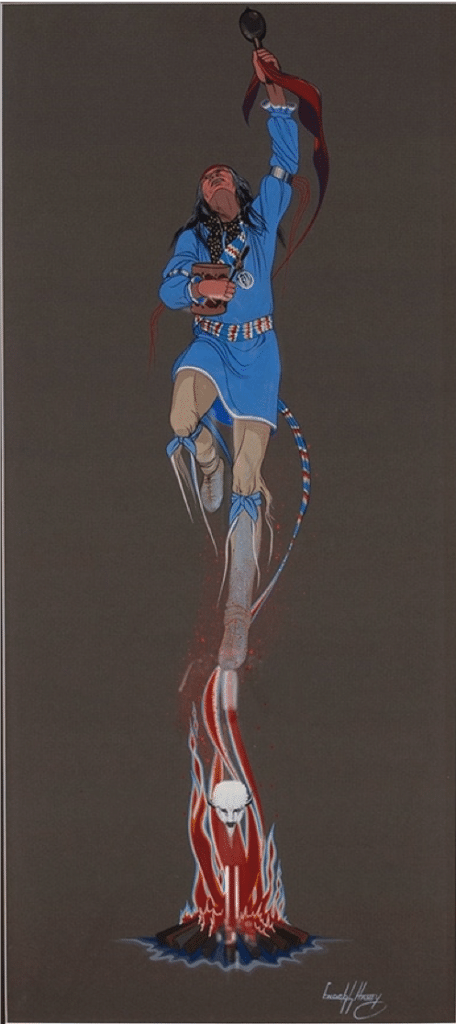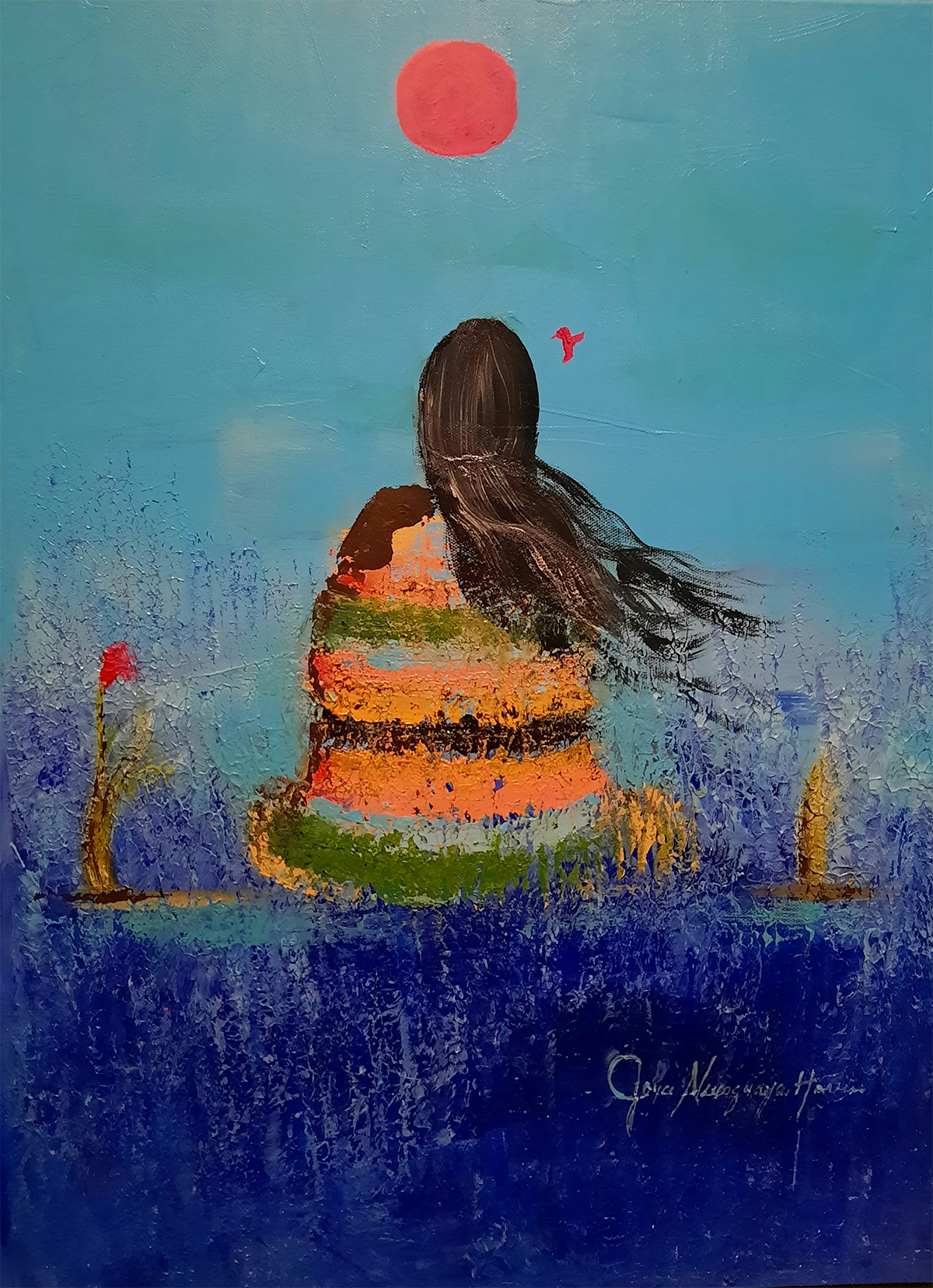In Memoria
Internationally recognized Seminole and Muscogee artist and politician Enoch Kelly Haney passed away on April 23, 2022. Born on November 12, 1940, Haney served as a member of the Oklahoma House of Representatives (1980-1986), a member of the Oklahoma Senate (1986-2002), and was the Chief of the Seminole Nation of Oklahoma (2005-2009).
Haney was known to be a master of diverse mediums. He is widely recognized as the sculptor of the 22-foot bronze statue, “The Guardian (2002),” located on top of the Oklahoma State Capitol dome. He began his career at a young age, often utilizing the red clay in front of his childhood home to produce sculptures. Haney studied art at the University of Arizona, at Bacone College under W. Richard “Dick” West (Cheyenne) and earned his BFA in Studio Art from Oklahoma City University. He continued drawing and painting throughout his life and would often find time to create art in his early career as a banker, then as a politician.
After he retired from politics, he focused on his art in Norman, Oklahoma. In a recent interview with The Norman Transcript, he explained the role his identity as an artist played in his artwork. “I’m just an artist. Art is who I am. It’s like breathing.” [1] He believed his role as an artist was to be a storyteller.
As a narrator, Haney successfully captured the raw energy and emotion of the scenes he depicted. Haney’s work, such as Untitled (Peyote Ceremony), captures the dynamic essence of storytelling. The scene depicts a man participating in a Peyote Ceremony, which for Plains communities, is a sacred ceremony performed within the Native American church.[2] Haney invites viewers to focus on the action of the Peyote Ceremony, as well as the transcendental qualities one feels as they connect to a parallel world. This particular piece invites the viewers to observe, however, to keep a distance by not revealing too many intricacies of the ceremony itself. The primary focus of the work is to draw attention to this vertical space and draw a sort of thread to the intangible. This work is indicative of the flat-style painting that Haney studied at Bacone.
Haney’s work is in the collections of the Oklahoma State Capitol (Oklahoma City) and the Chickasaw Cultural Center (Sulphur, Oklahoma). His concept for an Indigenous Veterans Memorial at the National Museum of the American Indian was a finalist in 2018.[3]
Please view available works by Enoch Kelly Haney at WYLD Gallery – www.wyld.gallery.
[1] Doug Hill, “The Norman Transcript,” The Norman Transcript, April 25, 2022, https://www.normantranscript.com/news/enoch-kelly-haney-leaves-lasting-legacy-a-2021-conversation-with-oklahoma-leader-in-multiple-fields/article_4da66c1e-c4b0-11ec-8cba-7bcadb05dfa8.html.
[2] For more information on the Native American Church and Peyote Ceremonies, please read: Daniel C. Swan, “Native American Church,” The Encyclopedia of Oklahoma History and Culture, https://www.okhistory.org/publications/enc/entry?entry=NA015.
[3] Stacy Pratt, “Native American Veterans Memorial finalists present their designs“, Blog Post, First American Art Magazine, https://firstamericanartmagazine.com/veterans-memorial-designs/

